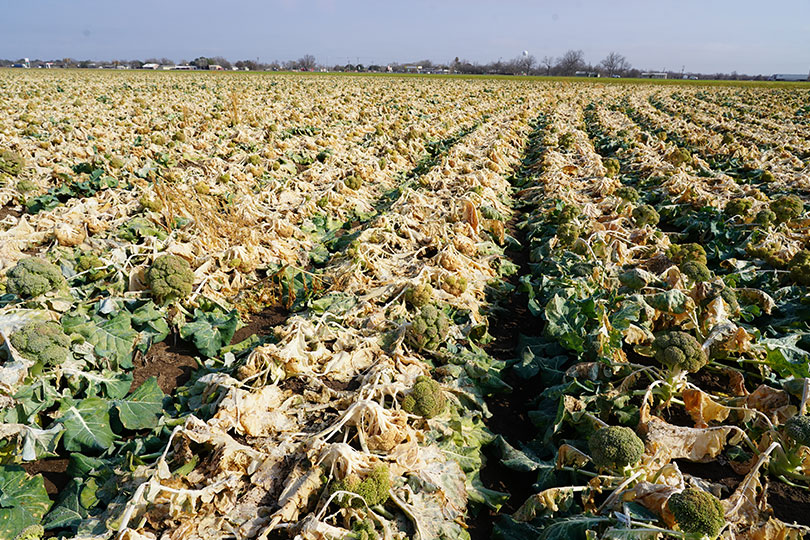By Julie Tomascik
Editor
Texas agriculture suffered devastating losses from Winter Storm Uri in mid-February, and farmers and ranchers need assistance to rebuild and recover, Texas Farm Bureau (TFB) President Russell Boening told a House committee this week.
Boening testified before the House Agriculture and Livestock Committee on the significant effects of February’s winter storm on farmers and ranchers across the state. Preliminary data from Texas A&M AgriLife Extension shows agricultural losses exceed $600 million.
“Texas farmers and ranchers are among some of the most resilient people in the state. They don’t have the option of staying inside when the weather turns bad. Their products are also highly susceptible to extreme weather conditions, like Winter Storm Uri,” Boening said. “We need to be willing to provide assistance to these people who suffered catastrophic losses for reasons well beyond their control.”
But a recent directive by U.S. Department of Agriculture’s (USDA) Farm Production and Conservation scaled back Farm Service Agency (FSA) office capacity to 25 percent. Previously, those decisions were made based on local data.
FSA administers many of the disaster relief programs available to agriculture from USDA. Without access to those offices, Texas farmers and ranchers could see a delay in receiving much-needed assistance.
“We understand safety is an issue with COVID-19. However, we need to ensure farmers and ranchers don’t suffer unintended consequences,” Boening said. “Programs are not effective if producers are unable to access it. The longer there are scale backs, the longer producers must wait to get applications processed and funds to actually help.”
He urged the committee to consider the diversity of crops and livestock that make up Texas agriculture, as well as the facilities used by farmers and ranchers.

Several USDA disaster assistance programs will help provide relief to farmers and ranchers. But because of the diverse commodities grown and raised in the Lone Star State, not all may be covered through these programs.
Some growers in the nursery and greenhouse sector may quality for USDA’s Tree Assistance Program, while many with flowers or ornamentals may not qualify.
There are also issues with farmers who raise redfish qualifying for USDA’s Emergency Livestock Assistance Program. Redfish farmers in Texas, who are a major source of domestic fresh fish, are facing devastating losses.
“The list of eligible commodities for all programs should be evaluated to ensure adequate assistance is available to the diverse agriculture in this state,” Boening said.
In addition to crop and livestock losses, buildings and shelters were damaged or destroyed during weather events this year.
“Many farmers and ranchers are dealing with damaged ag facilities from snow and ice dating back to the January snow storm, so any additional funding to rebuild structures—such as feed storage barns, livestock shelters and the like—would be helpful, especially if those structures were not covered by the farm insurance policy.”
Extending the Wildfire and Hurricane Indemnity Program Plus (WHIP+) would also help Texas farmers by providing payments to offset losses from natural disasters that occurred in 2020 and 2021.
Boening asked the committee to keep rural Texans at the forefront of discussions to mitigate the impacts of this storm and future weather events.
TFB also communicated the needs of rural Texans to Gov. Greg Abbott’s office during and immediately following the winter storm.
“Texas Farm Bureau has been working with the governor’s office since the storm to quantify damages so that the necessary disaster declarations could be made to begin the recovery process,” he said. “We have actually been working with the governor’s office throughout 2020 due to both the pandemic and Hurricane Hanna.”
For more information on resources available following the winter storm, visit TFB’s Winter Storm Resources web page.

